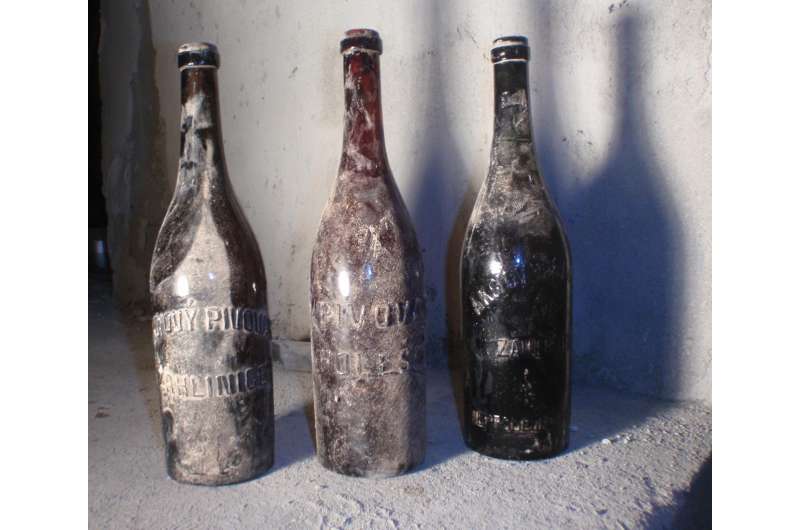Analysis yields clues to chemical composition, natural aging of 100-year-old beer

Stashed away and long-forgotten, a trio of century-old bottled beers recently discovered in the Czech Republic could help scientists better understand early 20th-century brewing practices, as well as the chemical changes that occur in beer over long periods of time. A report on the well-preserved lagers appears in ACS' Journal of Agricultural and Food Chemistry.
Uncovered in 2015 during the reconstruction of an old brewery, the three lager beers apparently were produced during the World War I era and stored in a large cold cellar at the brewery where they remained to gather dust. The beers were bottled in dark glass and well sealed. Taking advantage of this unique discovery, Jana Olšovská and colleagues sought to produce detailed chemical profiles of these 100-year-old beers and determine the long-term effects of lager beer aging.
Initial sensory analyses found that the beers ranged from intensely sulfuric to sour, and had off-flavors that ranged from fecal to fruity. Using high performance liquid chromatography and other techniques, the researchers compared the beers' features to those of modern day brews. For example, the century-old beers had higher alcohol content and were less bitter. They also contained more iron, copper, manganese and zinc. There was also evidence of the particular yeasts used to make each of the beers, along with bacterial and fungal contaminants.
The researchers conclude that chemical changes to two of the beers were likely caused by microbial contaminants while the third beer, which was better preserved, offered the best insights into the older brews' natural aging processes.
More information: Jana Olšovská et al. Analysis of 100-years-old beer originated from the Czech Republic, Journal of Agricultural and Food Chemistry (2017). DOI: 10.1021/acs.jafc.6b05706
Abstract
Three bottles of different beers were found in 2015 during a reconstruction of the brewery of the Raven Trading s.r.o. company in Záhlinice, Czech Republic. Thanks to good storage conditions it was possible to analyze their original characteristics. All three bottles contained most probably lager type beer. One beer had sulfuric and fecal off-flavors; it was bright with the original extract of 10.3 ° Plato. The second beer, with an original extract of 7.6 ° Plato, was dark and very acidic, resembling Lambic. DNA analysis proved the presence of Dekkera bruxellensis which corresponded to its chemical profile (total acidity, FAN, ethyl acetate, total esters). The third beer contained traces of carbon dioxide bubbles, was light brown and slightly bitter with original extract 10.4 ° Plato. Since it obviously underwent a natural aging process, sweetness, honey and fruity off-flavors were detected and transformation products of iso-alpha acids were found.
Journal information: Journal of Agricultural and Food Chemistry
Provided by American Chemical Society




















